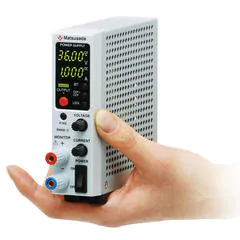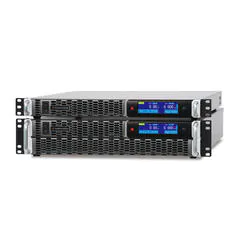Unit Prefix
When writing specifications, you will often write numerical values in various units. However, if the number has a large number of digits, it will be difficult to read if separated by commas. The prefix is used at that time. It is also called the "SI prefix".
It is literally used in the SI unit system and changes every 3 digits. Famous ones are kilo (k), which means 1000 times, and mega (M), which means 1 million times. On the other hand, the smaller one has milli (m), which means 1/1000. Let's list them in the following table.
| Symbol | Word | Multiplier | Magnification | Enactment |
|---|---|---|---|---|
| Y | yotta | 1024 | 1 septillion | 1991 |
| Z | zetta | 1021 | 1 sextillion | 1991 |
| E | exa | 1018 | 1 quintillion | 1975 |
| P | peta | 1015 | 1 quadrillion | 1975 |
| T | tera | 1012 | 1 trillion | 1960 |
| G | giga | 109 | 1 billion | 1960 |
| M | mega | 106 | 1 million | 1960 |
| k | kilo | 103 | 1000 | 1960 |
| h | hecto | 102 | 100 | 1960 |
| da | deca | 101 | 10 | 1960 |
| 100 | 1 | |||
| d | deci | 10-1 | 1/10 | 1960 |
| c | centi | 10-2 | 1/100 | 1960 |
| m | milli | 10-3 | 1/1000 | 1960 |
| µ | micro | 10-6 | 1/1 million | 1960 |
| n | nano | 10-9 | 1/1 billion | 1960 |
| p | pico | 10-12 | 1/1 trillion | 1960 |
| f | femto | 10-15 | 1/1 quadrillion | 1964 |
| a | atto | 10-18 | 1/1 quintillion | 1964 |
| z | zepto | 10-21 | 1/1 sextillion | 1991 |
| y | yocto | 10-24 | 1/1 septillion | 1991 |
When describing in the SI unit system in the specifications, the units are written using these SI prefixes. And new prefixes will be added as you can see from the year of establishment. In fact, the unit "exabyte" is used in the computer-related field where, and I think that "zettabyte" will appear frequently in the next few years.
By the way, in the field of computer development, these prefixes have different meanings from SI prefixes. For example, kilobytes mean 1,024 (210) bytes instead of 1000 bytes, and megabytes mean 1,048,576 (220) bytes. There are written in the multiplier of 2, not the multiplier of 10 in the field of computers.
SI Unit System and Other Unit Systems
So far, we have explained the SI prefix, which is used in the SI unit system (although it may be used in some computer-related fields).
The SI system of units defines length as meters (m), weight as kilograms (kg), and time as seconds (s). Of course, these are the units used in dynamics, so other units are set for the field of electromagnetics such as batteries. By the way, most units have been changed to a new definition by 2019 so that they do not depend on artificial objects.
- Length: meters (m)
- Originally, the total circumference of the meridian of the earth was defined as 40,000 km, but now it is set by setting the value of the speed of light c in vacuum to be exactly 299,792,458 m/s.
- The word "meter" is derived from the ancient Greek word "µέτρον καθολικóν (Metron Catholicon)". This was the origin of the Italian scientist Tito Livio Burtini coining the term "metro cattolico" which means "universal unit of measure".
- Mass: kilogram (kg)
- In 2019, the definition was changed to be based on a fixed value of the Planck constant (h). The kilogram is now defined by taking the fixed numerical value of the Planck constant h to be 6.62607015 × 10⁻³⁴ when expressed in the unit J⋅s, which is equal to kg⋅m²⋅s⁻¹.
- Time: seconds (s)
- Originally, 1/86400 of the length of the day was defined as 1s. It is now defined as a duration of 9,192,631,770 times the period of the radiation corresponding to the transition between the two hyperfine levels of the ground state of the atom of cesium-133.
- Frequency: Hertz (Hz)
- The Hz used as the frequency of the wave is defined as the reciprocal of time (s). Hz = s-1. In the past, there was a time when the unit "cycle per second (c/s)" was used.
- The word "Hertz" comes from the German physicist Heinrich Rudolf Hertz, who contributed to the field of electromagnetism.
- Current: Ampere (A)
- The current that flows 1C (coulomb) charge per second is 1A. When written in the formula, 1A = 1C/s. The word "ampere" comes from André-Marie Ampère, a French physicist known for "Ampere's Law," which describes the relationship between electric current and magnetic fields.
- Voltage: Volt (V)
- When 1J of work is required to carry 1C of electric charge between two points of a conductor, the voltage between the two points is 1V. The formula is V = J/C.
- The word "volt" comes from the Italian physicist Alessandro Volta (Il Conte Alessandro Giuseppe Antonio Anastasio Volta), known for his "Voltaic Batteries".
- Resistance: Ohm (Ω)
- The electrical resistance at which a voltage of 1A flows when a voltage of 1V is applied is 1 Ω. The formula is Ω = V/A.
- The word "Ohm" comes from Georg Simon Ohm, a German physicist who discovered "Ohm's Law" on electrical resistance.
- Capacitance: Farad (F)
- It is a unit used in capacitors, etc., and is defined as 1F "capacitance between two conductors that produces a DC voltage of 1 V when charging 1C of electricity". In other words, "1F is the capacitance that can charge 1C charge with a potential difference of 1V". You can write F = A⋅s/V.
- The word "Farad" comes from Michael Faraday, a British physicist and chemist who has been credited with electromagnetism and electrochemistry.
- Inductance: Henry (H)
- 1H, which is a unit of inductance, is defined as the "inductance of a closed circuit (coil, etc.) that produces an electromotive force of 1V when a direct current that changes at a rate of 1A per second flows." H = V⋅s/A.
- The word "Henry" is also derived from the American physicist Joseph Henry. Henry independently discovered electromagnetic induction at about the same time as Faraday.
Basically, it will be described using these SI unit systems. However, some countries/regions and industries use other unit systems. For example, astronomy uses the cgs unit system (unit system represented by cm, g, s) in part, and the United States and the United Kingdom still use the Imperial system.
There are remnants of the cgs unit system here and there. For example, the unit of atmospheric pressure used in the weather forecast uses hectopascal (100 Pa) as a standard, but this was when the cgs unit system millibar (mb) was used in the past. A hectopascal is the same value as a millibar.
On the other hand, the imperial system uses inches (1 inch = about 2.54 cm), feet (1 foot = 12 inch = about 30.5 cm), and yards (1 yd = 3 feet = about 91.4 cm). It weighs pounds, previously slightly different from country to country, but was unified in 1958 and now weighs 0.45359237 kg per pound.
| Unit | SI Unit System | ||
|---|---|---|---|
| inch | length | 2.54 cm | |
| foot | length | 1 foot = 12 inch | 30.48 cm |
| yd | length | 1 yd = 3 feet | 91.44 cm |
| pound (£) | weight | 0.45359237 kg |
Mixing the imperial and SI unit systems can lead to problems. In fact, in 1999, an accident occurred in which the spacecraft "Mars Climate Orbiter" failed to insert into Mars orbit. The reason was calculated by the imperial system when calculating the required engine thrust at Lockheed Martin, which manufactured the spacecraft, but the Jet Propulsion Laboratory (JPL), which was operating it, calculated it by SI unit system. It occurred because I misunderstood that it was a unit system. From this, we can see that when we manufacture or control something, it is important to unify the unit system to either one or to write the unit firmly.
Other Units and Notation
Other units include prefixes that first appear in the field of chemistry, especially organic chemistry. These are the prefixes used to represent the number of atoms. Originally in Greek, it was a word for numbers. Listed below.
| Number | 1 | 2 | 3 | 4 | 5 | 6 | 7 | 8 | 9 | 10 |
|---|---|---|---|---|---|---|---|---|---|---|
| Prefix | mono | di | tri | tetra | penta | hexa | hepta | octa | nona | deca |
For example, in recent years, battery technology using polytrimethylene oxide as an electrolyte has been developed, which is a polymerization of trimethylene oxide (oxetane) in which three methyl groups are combined with oxygen. You can see that "tri" stands for 3.
Other than that, what you see as a unit is the notation of currency. The Japanese yen is represented by "¥", the US dollar is represented by "$", and the euro is represented by "€". As for the dollar, there are dollars of each country, so the dollar used in the United States is written as "US dollar", and the dollar used in Australia is written as "Australian dollar". Also, the Chinese yuan also uses "\", so be careful not to confuse it with the Japanese yen.
As a bonus, another small story. We wrote above that "megabytes are 1,048,576 (220) bytes". At this time, every three digits are separated by ", (comma)". In Japan, we often see such notations, including bookkeeping, but there are differences in this writing style depending on the country.
The United States, United Kingdom, China, and South Korea have the same notation as Japan. For example, if you include the decimal point, it will be written as "1,234,567.89". The decimal point is ". (Period)", and the integer is separated by "," every three digits.
However, in Western countries, the usage of periods and commas are reversed, and it is written as "1.234.567,89". In addition, South American countries will use the same notation, probably due to the influence of Spain and Portugal. Scandinavia, Eastern Europe, and Russia are also a little different. "1 234 567,89", the decimal point is a comma, which is the same as in Western Europe, but a half-width space is used to separate the three digits. Furthermore, in the vicinity of Switzerland and the border with Switzerland, "1'234'567.89" and the decimal point is a period, but "'(apostrophe)" is used to separate the three digits.
In any case, keep in mind that the characters used for delimiters are not universal in Japan. Especially when using currency, mistakes in commas and periods can lead to serious damage, so it is necessary to confirm which unit and which delimiter the other party is using before making a transaction.
Related Technical Articles
Recommended products
Matsusada Precision's Product Introduction
Reference (Japanese site)
- Japanese source page 「単位のいろいろ」
(https://www.matsusada.co.jp/column/unit.html) - 特許:「ポリトリメチレンオキシド及びポリトリメチレンオキシドを電解質として含む電池」
https://jstore.jst.go.jp/nationalPatentDetail.html?pat_id=28164(Link expired)






